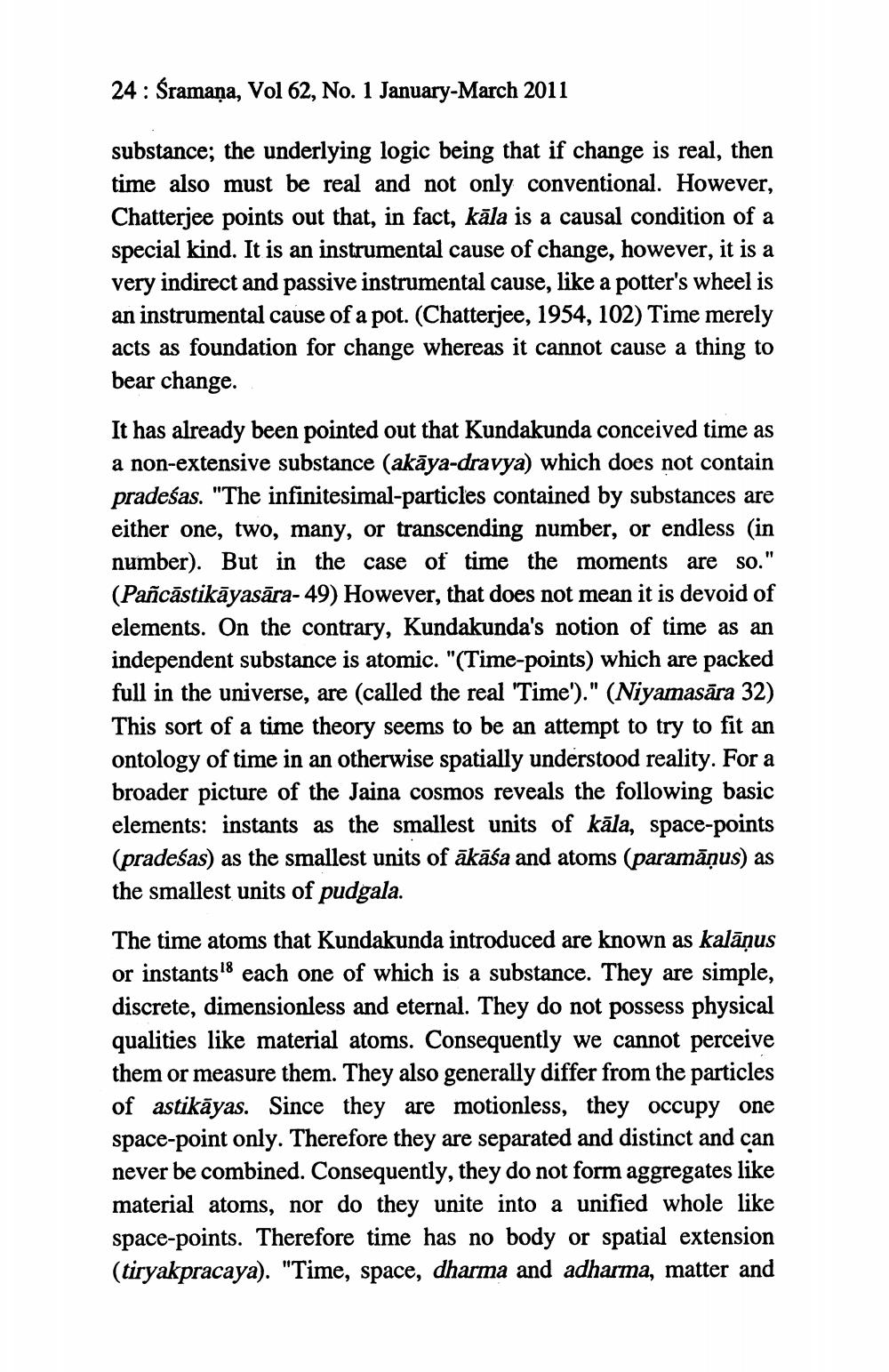________________
24 : Śramaņa, Vol 62, No. 1 January-March 2011
substance; the underlying logic being that if change is real, then time also must be real and not only conventional. However, Chatterjee points out that, in fact, kāla is a causal condition of a special kind. It is an instrumental cause of change, however, it is a very indirect and passive instrumental cause, like a potter's wheel is an instrumental cause of a pot. (Chatterjee, 1954, 102) Time merely acts as foundation for change whereas it cannot cause a thing to bear change.
It has already been pointed out that Kundakunda conceived time as a non-extensive substance (akāya-dravya) which does not contain pradeśas. "The infinitesimal-particles contained by substances are either one, two, many, or transcending number, or endless (in number). But in the case of time the moments are so." (Pañcāstikāyasāra-49) However, that does not mean it is devoid of elements. On the contrary, Kundakunda's notion of time as an independent substance is atomic. "(Time-points) which are packed full in the universe, are (called the real 'Time')." (Niyamasāra 32) This sort of a time theory seems to be an attempt to try to fit an ontology of time in an otherwise spatially understood reality. For a broader picture of the Jaina cosmos reveals the following basic elements: instants as the smallest units of kāla, space-points (pradeśas) as the smallest units of ākāśa and atoms (paramāņus) as the smallest units of pudgala. The time atoms that Kundakunda introduced are known as kalāņus or instants 18 each one of which is a substance. They are simple, discrete, dimensionless and eternal. They do not possess physical qualities like material atoms. Consequently we cannot perceive them or measure them. They also generally differ from the particles of astikāyas. Since they are motionless, they occupy one space-point only. Therefore they are separated and distinct and can never be combined. Consequently, they do not form aggregates like material atoms, nor do they unite into a unified whole like space-points. Therefore time has no body or spatial extension (tiryakpracaya). "Time, space, dharma and adharma, matter and




